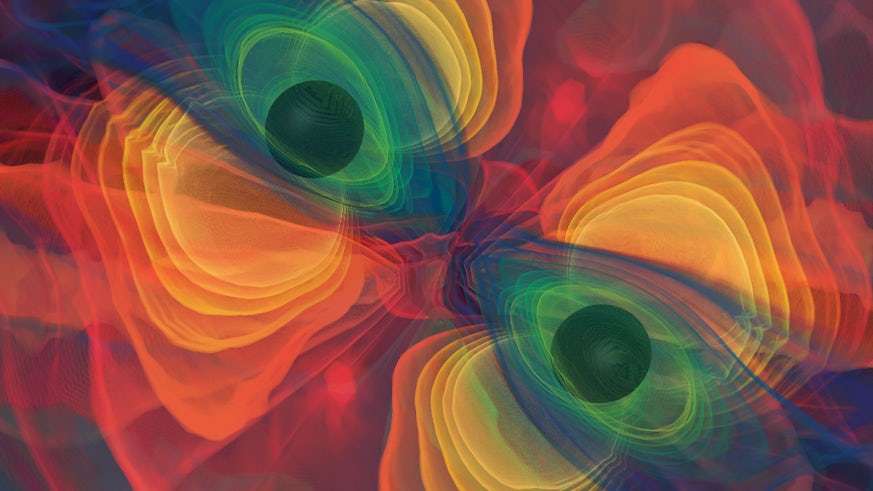New gravitational waves observation run to reveal more of the universe’s secrets
22 June 2023

A new observation run to search for ripples in space-time generated by colliding black holes and other extreme cosmic events will take gravitational wave astronomy to the next level, scientists claim.
Upgraded instruments, some of which use Cardiff University-built technology, new and even more accurate signal models, and more advanced data analysis methods mean the 20-month observation will be the most sensitive search for gravitational waves to date.
The increased sensitivity means the observation of yet-to-be-detected types of gravitational-wave sources, such as continuous gravitational waves and gravitational-wave background, is more likely.
Professor Patrick Sutton, from Cardiff University’s School of Physics and Astronomy and Chair in the Observational Sciences Division of the LIGO Scientific Collaboration, said: "The upgraded detectors will be able to see black holes and neutron stars at much greater distances through the Universe, which comes with the increasing challenge of understanding and removing all the Earth-based sources of disturbance to the detectors.
"There have already been some interesting signals during the detector commissioning phase, including the rare case of a black hole swallowing a neutron star, so everyone's very excited!"
The observation run, known as O4, is led by the LIGO-Virgo-KAGRA collaboration, which brings together scientists from across the globe including experts from Cardiff Univeristy’s School of Physics and Astronomy, to search for gravitational waves using a network of observatories - LIGO in the United States, Virgo in Europe, and KAGRA in Japan.
Professor Katherine Dooley, from the Gravity Exploration Institute at Cardiff Univeristy’s School of Physics and Astronomy, added: "The LIGO detectors will begin O4 approximately 30% more sensitive than before, due to the hard work of commissioners at the sites who have succeeded in achieving record levels of laser power and squeezed states of light in the interferometers."
The O4 run will also improve scientists’ ability to extract more physical information from the data and improve tests of Einstein’s theory of general relativity and inferences about the true population of dead stars in the local universe.
Dr Ali James, a Research Associate at Cardiff Univeristy’s School of Physics and Astronomy, said: "As we begin a new observation run, we’ll be observing gravitational wave signatures with an unprecedented detector sensitivity.
"I’m very excited to see how all the new technologies perform in the upgraded LIGO detector, particularly the new photodetector readouts that we contributed to the experiment, and which I developed as part of my PhD."
A larger fraction of the universe will also be observed in O4 compared with previous observing runs, resulting in a higher rate of observed gravitational-wave signals.
In order to cope with the expected large number of detections, scientists have developed a framework for rapid development and generation of new models.
Dr Fabio Antonini, from theGravity Exploration Institute at Cardiff University’s School of Physics and Astronomy, added: "Over the next year, the current catalogue of about 100 events is expected to nearly double in size.
"The new data set will shed light on how these black holes and neutron stars form, putting to test our understanding of massive stars.”
Share this story
It is a friendly, approachable School with a strong commitment to teaching excellence and world class research in physics and astronomy.






